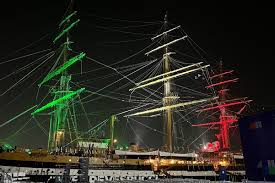At a recent global business summit in the capital, Prime Minister Narendra Modi made some very telling points which didn’t receive adequate media play, or rather the relevant parts just before the budget didn’t necessarily get a wider dispersal. The remarks prefaced with a lot of what needs to be done and what has been achieved kept the bitter pill for the end. And it is this segment of his speech which unequivocally telegraphed his intention to the audience. Believe me, it must have sent shivers down the spines of India Inc. For it reflects a changing mindset. I can bet that that the impending budget will definitely see a spitting image of some of these points.
I am now going to quote the particular spine chilling paragraph for top industry honchos:
“I have been referring to cooking gas, fertilizer and kerosene subsidies. I must confess that I am surprised by the way words are used by experts on this matter. When a benefit is given to farmers or to the poor, experts and government officers normally call it a subsidy. However, I find that if a benefit is given to industry or commerce, it is usually called an “incentive” or a “subvention”. We must ask ourselves whether this difference in language also reflects a difference in our attitude? Why is it that subsidies going to the well-off are portrayed in a positive manner? Let me give you an example. The total revenue loss from incentives to corporate tax payers was over Rs. 62,000 crores. Dividends and long term capital gains on shares traded in stock exchanges are totally exempt from income tax even though it is not the poor who earn them. Since it is exempt, it is not even counted in the Rs. 62,000 crores. Double Taxation avoidance treaties have in some cases resulted in double non-taxation. This also is not counted in the Rs. 62,000 crores. Yet these are rarely referred to by those who seek reduction of subsidies. Perhaps these are seen as incentives for investment. I wonder whether, if the fertiliser subsidy is re-named as “incentive for agricultural production”, some experts will view it differently.”
Now this lingua franca signifies an important change in thinking. Somewhere in these 20 months, the PM has understood that jibes like suit boot ki sarkar have actually stuck like a limpet. He has also begun to understand that India resides in its villages and a daily mass migration is debilitating the civic infrastructure in urban agglomerates. No skill and low skill migrants from agrarian India are only adding to the pressure on the already hard pressed employment calculus. If the learnings of this speech were to be transposed to policy redesign, then expect some dynamic changes in the days to come, more so expect some of it to find space in the budget document as well. If one were to read the fine print of the aforementioned portion of the PM’s speech, then the wealth of the richest shall take a sharp knock, besides the stock markets which will have to take it on the chin. Ultimately the PM has realised that the bottom of the pyramid is where India lives and votes and one needs to plug and play with that constituent more than anyone else.
As we know, most economic indicators are still on skid row, the economy remains stagnant, but the PM chose to explain at the same summit that all was not lost:
“You may be interested to know that
• India’s highest ever urea fertiliser production was achieved in 2015.
• India’s highest ever production of ethanol as blended fuel, benefiting sugar cane farmers, was in 2015.
• The highest number of new cooking gas connections to the rural poor was achieved in 2015.
• India’s highest ever output of coal was achieved in 2015.
• India’s highest ever generation of electricity was achieved in 2015
• India’s highest ever quantity of cargo handled by major ports was in 2015.
• India’s fastest average turnaround time in ports was in 2015.
• India’s highest ever increase in railway capital expenditure was achieved in 2015.
• India’s highest ever number of new highway kilometres awarded was in 2015.
• India’s highest ever production of motor vehicles was achieved in 2015
• India’s highest ever software exports were achieved in 2015.
• India’s highest ever rank in World Bank Doing Business indicators, was achieved in 2015.
• India’s highest ever foreign exchange reserves were achieved in 2015. ”
Rising external debt cause for concern
GDP growth is being revised downwards, industrial production and manufacturing numbers remain in a shambles, some recovery is evident in automobile sales, but one swallow doesn’t make a summer. The biggest imponderable remains wide spread rural distress which shows no signs of alleviation and investment pipelines which remain drier than the Thar. What is not being factored into the equation is India’s burgeoning external debt position. India’s total external debt at March-end last year was $475.8 billion, up 6.6 percent from the corresponding period a year ago. As a percentage of the gross domestic product (GDP), external debt was 23.8 percent at March-end, up from 23.6 percent in 2013-14.
“A cross-country comparison based on International Debt Statistics 2015 of the World Bank, which presents the debt data for 2013, shows India continues to be among the less vulnerable countries, with its external debt indicators comparing with other indebted developing countries,” the finance ministry said. This March, external debt is expected to be at a dangerous tipping of $500 billion. India’s External Debt at end-September 2015 stood at $ 483.2 billion, recording an increase of $ 8.0 billion (1.7 per cent) over the level at end-March 2015; Rise in external debt during the period was due to long-term external debt particularly commercial borrowings and NRI deposits. Long-term debt at end-September 2015 was placed at US$ 397.1 billion, showing an increase of US$ 7.4 billion (1.9 per cent) over the level at end-March 2015. Short-term external debt witnessed an increase of 0.7 per cent and stood at US$ 86.1 billion at end-September 2015.
A stronger US dollar and/or rise in real rates will hurt economies where reserves are low or debt is high. While India’s foreign reserves are rising, they remain low relative to external debt. The rising share of non-government external debt is a concern. While government external debt has been stable at 4-5% of GDP since the 2008/09 fiscal year, the share of non-government obligations is up from 13% of GDP to 19% in the 2014/15 fiscal year. This rise is also responsible for the overall increase in external debt. It is believed that RBI Governor has advised the government to write down bad loans. The rising NPAS may well implode the banking system and this is another major worry for the government.
This budget is a make or break opportunity for Mr Modi. The growing catalogue of economic woes and worries will only accentuate this year. China’s unwinding is still incomplete. It has to be now for transformative ideas. After this, he is out of bullets.
Courtesy: ORF- 2016 Budget: Will it show a shift in Modi’s policies?
Author Profile
- India Writes Network (www.indiawrites.org) is an emerging think tank and a media-publishing company focused on international affairs & the India Story. Centre for Global India Insights is the research arm of India Writes Network. To subscribe to India and the World, write to editor@indiawrites.org. A venture of TGII Media Private Limited, a leading media, publishing and consultancy company, IWN has carved a niche for balanced and exhaustive reporting and analysis of international affairs. Eminent personalities, politicians, diplomats, authors, strategy gurus and news-makers have contributed to India Writes Network, as also “India and the World,” a magazine focused on global affairs.
Latest entries
 DiplomacyOctober 4, 2025UNGA Resolution 2758 Must Not Be Distorted, One-China Principle Brooks No Challenge
DiplomacyOctober 4, 2025UNGA Resolution 2758 Must Not Be Distorted, One-China Principle Brooks No Challenge India and the WorldJuly 26, 2025MPs, diplomats laud Operation Sindoor, call for national unity to combat Pakistan-sponsored terror
India and the WorldJuly 26, 2025MPs, diplomats laud Operation Sindoor, call for national unity to combat Pakistan-sponsored terror India and the WorldJuly 25, 2025When Fire Ends, Diplomacy Begins
India and the WorldJuly 25, 2025When Fire Ends, Diplomacy Begins India and the WorldJuly 16, 2025Operation Sindoor and its Aftermath: India’s Successful Diplomatic Outreach
India and the WorldJuly 16, 2025Operation Sindoor and its Aftermath: India’s Successful Diplomatic Outreach








